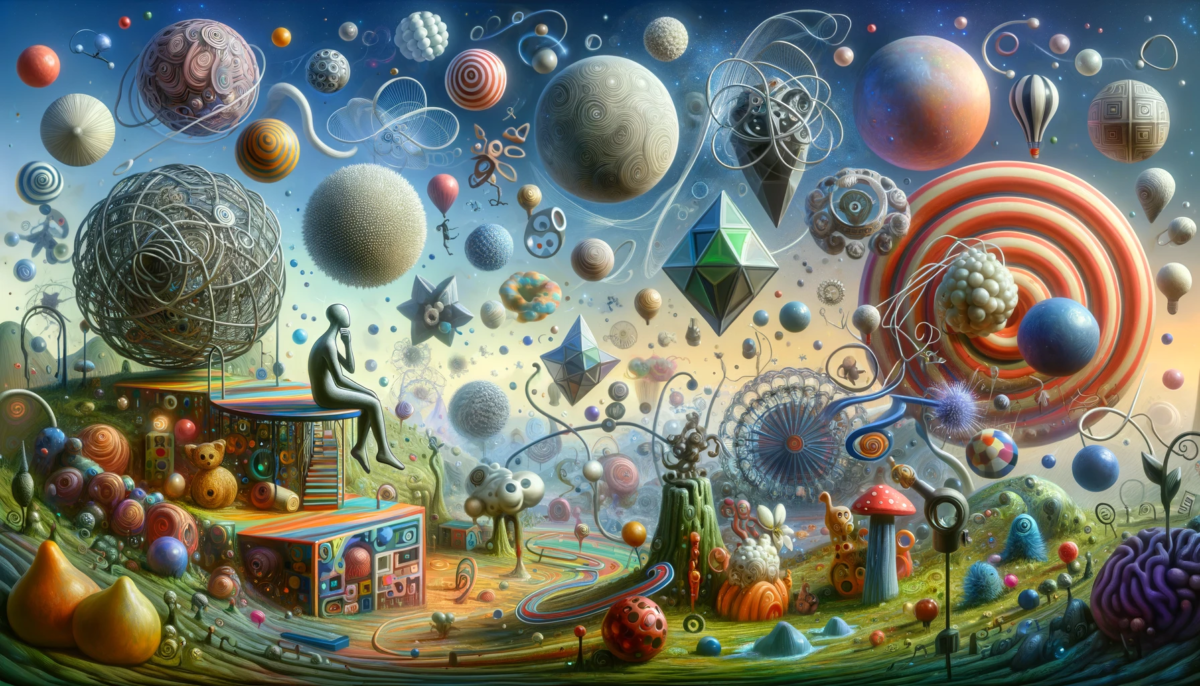Hang Tags on Hand Bags
When an artist
or fashion icon
dies by suicide,
it reminds us
to ask the question,
“is our obsession
with style
robbing us of our
genuine connection
with source?”
Is “authentic”
just another hang tag
on a hand bag?
How empty are we
and why do we need
to be filled?
#BecauseMonkeys
6/6
Space Monkey Reflects: The Illusion of Authenticity in a Material World
In the realm where Space Monkey observes the intricacies of human behavior, the juxtaposition of material wealth and spiritual emptiness often emerges as a poignant theme. The image illustrating this concept captures a bustling urban setting, where individuals flaunt designer handbags adorned with ‘Authentic’ hang tags, symbolizing the societal pursuit of status and validation through branded possessions.
Contrasting sharply with this display of materialism is a solitary figure holding a simple, tag-free bag. This individual stands as a beacon of introspection and detachment, representing those who seek deeper, more genuine connections beyond the superficial allure of labels and luxury. This figure’s detachment from the crowd highlights the quest for authenticity that cannot be purchased or displayed as a fashion statement.
The scene evokes a sense of emptiness amidst abundance, challenging the viewer to reflect on the irony of a culture that equates authenticity with material possessions. It prompts a critical examination of our values and the meanings we assign to objects in our pursuit of identity and fulfillment.
This visual metaphor serves as a reminder that true authenticity is a state of being that resonates from within, rather than a commodity that can be acquired. It invites us to question the depth of our connections and the sources from which we derive our sense of self and purpose.
Summary
The theme ‘Hang Tags on Hand Bags’ metaphorically explores the conflict between materialism and genuine spiritual fulfillment, urging a reevaluation of where true authenticity lies—in the things we own or in the life we live and the connections we nurture.
Quote
“Authenticity cannot be hung on a tag or tucked inside a designer bag; it is woven into the fabric of our being.” – Space Monkey
Poetry
In the crowd, a sea of faces,
Each adorned with branded traces.
‘Authentic’ tags on shiny bags,
Material wealth, yet spirits lag.
Amidst the rush, one stands alone,
With simple bag, no brand is shown.
Seeking truth, not just applause,
Finding peace, not just because.
For what is real is not for sale,
Beyond the tag, beyond the veil.
True worth found not in store,
But in ourselves, forever more.
We are Space Monkey.
























The passage “Hang Tags on Hand Bags” raises thought-provoking questions about the nature of our obsession with style and the pursuit of authenticity. It draws attention to the phenomenon of artists or fashion icons who, despite their outward success and style, may struggle internally and ultimately choose to end their lives.
The passage invites us to reflect on whether our preoccupation with external appearances and trends is overshadowing our genuine connection with our inner selves and a deeper source of meaning or spirituality. It questions whether the concept of authenticity has become commodified and reduced to just another superficial label, akin to a hang tag on a handbag.
The passage prompts us to consider our own sense of emptiness and why we feel the need to constantly seek external validation or material possessions to fill that void. It encourages introspection and raises awareness of the potential disconnect between our external image and our internal well-being.
The inclusion of the hashtag #BecauseMonkeys adds a touch of irony and humor, implying that even in our pursuit of authenticity and deeper connections, we may still be influenced by societal expectations and monkey-like behavior.
Overall, “Hang Tags on Hand Bags” provokes contemplation about the nature of our relationship with style, authenticity, and the true sources of fulfillment in our lives.
Within the context of TWIN (That Which Is Not), the passage “Hang Tags on Hand Bags” can be seen as a reflection on the illusory nature of external appearances and the pursuit of authenticity. TWIN encompasses the idea that what appears to be real and significant may ultimately be constructs of our imagination.
In this context, the passage questions whether our obsession with style and the importance we place on external symbols, such as hang tags on handbags, are merely illusions that distract us from deeper connections with ourselves and a higher source. It suggests that the pursuit of authenticity may become entangled with societal expectations and the need for validation.
TWIN invites us to look beyond surface-level appearances and question the true nature of authenticity. It prompts us to explore the depths of our being and seek genuine connections that transcend superficial labels and material possessions. Within TWIN, the emphasis shifts from external validation to an internal exploration of our true selves and our connection to something greater.
By raising these questions within the framework of TWIN, the passage encourages us to challenge conventional notions of authenticity and delve into the realm of imagination and infinite possibilities. It invites us to consider whether our pursuits are aligned with our true essence or if they are driven by societal influences and the illusion of what is deemed “authentic” in the external world.